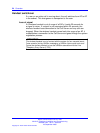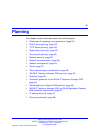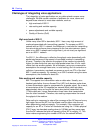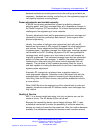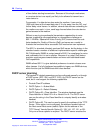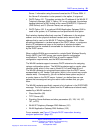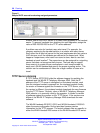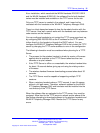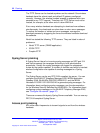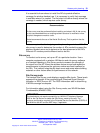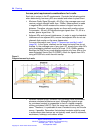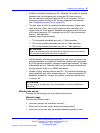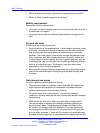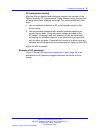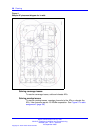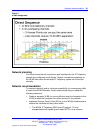
32 Planning
The TFTP Server can be located anywhere on the network if the wireless
handsets have the subnet mask and default IP gateway configured
correctly. However, the wireless handset expects a response within two
seconds to any TFTP request. Therefore, the TFTP Server must not be
located, for example, at the other end of a slow WAN link.
If too many wireless handsets are attempting to download new software
simultaneously, the downloads can slow down or return error messages.
To reduce the number of retries and error messages, manage the
download process by staggering the times the wireless handsets download
the software.
Nortel has tested the following TFTP servers. They are listed in order of
preference.
•
Nortel TFTP server (ONMS application)
• 3COM TFTP
•
PumpkinTFTP
Syslog Server planning
A Syslog Server listens for incoming syslog messages on UDP port 514
and then processes the messages according to local administrative
procedures. Usually the syslog messages are logged for subsequent
review by the system operator. A number of devices used within a handset
wireless configuration are capable of sending messages to a Syslog
Server.
The Syslog Server can be any RFC 3164-compliant log server. You can
configure the WLAN IP Telephony Manager 2245, WLAN Application
Gateway 2246, WLAN APs 2220/2221/2230/2231, and the WLAN
Handsets 2210/2211/2212/6120/6140 to generate syslog messages. For
information about configuring syslog messages, see the documentation
for the Wireless Security Switches and WLAN APs. For information about
configuring syslog messages on the WLAN IP Telephony Manager 2245,
see “Configure the network” (page 97).
There are numerous third-party Syslog Servers available. You can use any
RFC 3164-compliant Syslog Server.
Access point planning
APs utilize radio frequencies to transmit signals to and from the wireless
handsets.
Nortel Communication Server 1000
WLAN IP Telephony Installation and Commissioning
NN43001-504 03.04 Standard
23 September 2008
Copyright © 2004–2008 Nortel Networks
.



